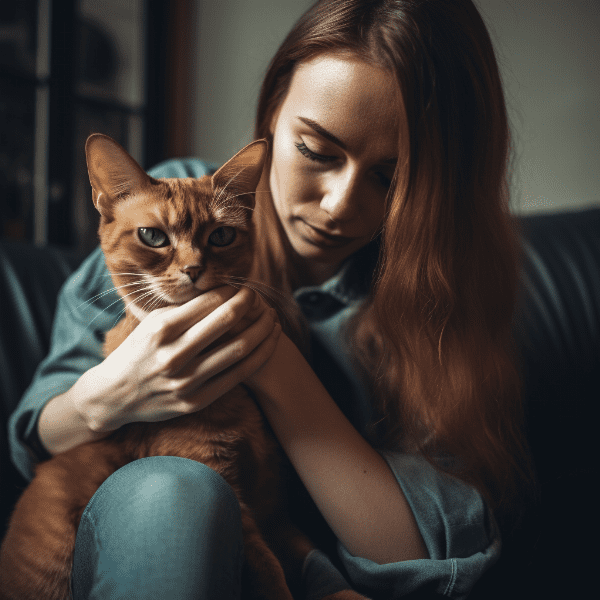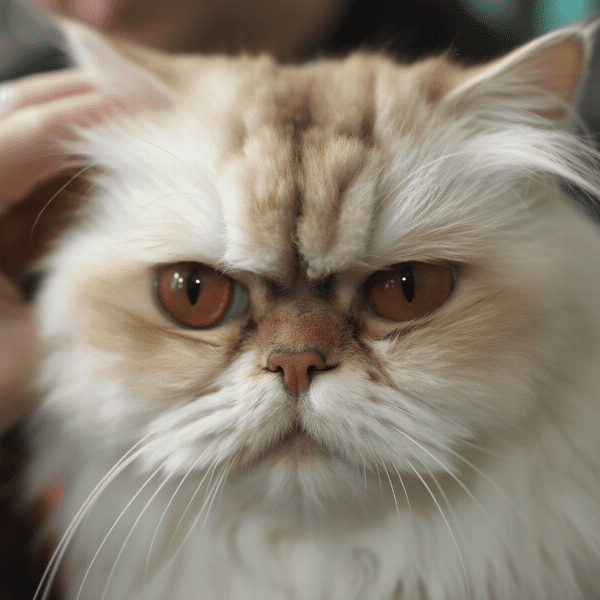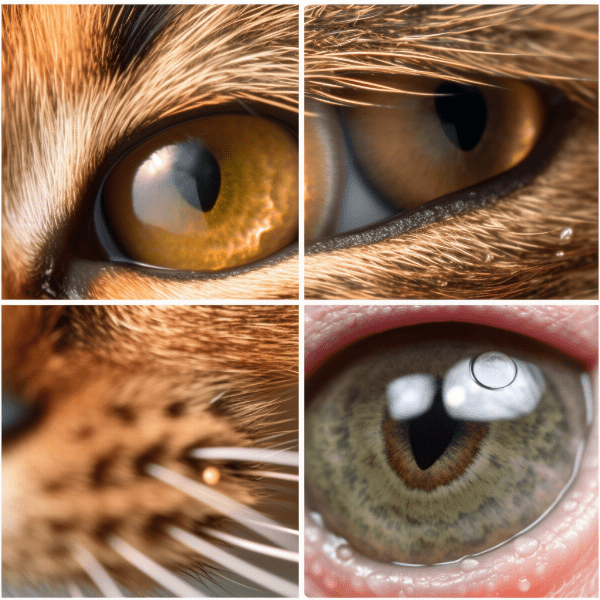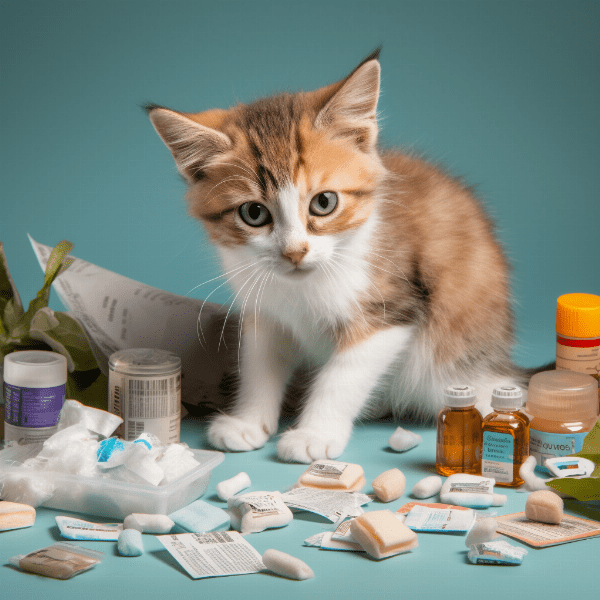Table of Contents
- Understanding Feline Eye Sickness
- Common Symptoms of Feline Eye Sickness
- Causes of Feline Eye Sickness
- Diagnosing Feline Eye Sickness
- Treatment Options for Feline Eye Sickness
- Home Care for Cats with Eye Sickness
- Preventing Feline Eye Sickness
- When to See a Veterinarian
- Importance of Regular Eye Exams for Cats
- Living with a Cat with Eye Sickness
Understanding Feline Eye Sickness
Feline eye sickness is a common condition among cats that can cause discomfort and even vision loss. In this section, we will take a closer look at what feline eye sickness is, how it affects cats, and what the main types of feline eye sickness are.
Anatomy of a Cat’s Eye
Before we dive into feline eye sickness, it’s important to understand the anatomy of a cat’s eye. A cat’s eye is made up of several components, including the cornea, lens, iris, retina, and optic nerve. These structures work together to help a cat see and interpret the world around them.
What is Feline Eye Sickness?
Feline eye sickness refers to any condition that affects a cat’s eye, including infections, injuries, and diseases. The symptoms of feline eye sickness can vary depending on the underlying cause, but common signs include redness, swelling, discharge, and squinting.
Types of Feline Eye Sickness
There are several different types of feline eye sickness, including:
- Conjunctivitis: an infection or inflammation of the conjunctiva, which is the thin layer of tissue that covers the white part of the eye and the inside of the eyelids.
- Corneal ulcers: a scratch or abrasion on the cornea, which can be caused by injury or infection.
- Glaucoma: a condition that occurs when there is too much pressure inside the eye, which can lead to vision loss.
- Cataracts: a clouding of the lens in the eye, which can cause vision problems and blindness.
How Feline Eye Sickness Affects Cats
Feline eye sickness can cause a range of symptoms and complications, from mild discomfort to blindness. If left untreated, some types of feline eye sickness can also spread to other parts of the body and cause systemic infections.
Overall, understanding the different types of feline eye sickness and their effects on cats is crucial for pet owners to recognize when their feline friends are experiencing symptoms and to seek proper treatment from a veterinarian.
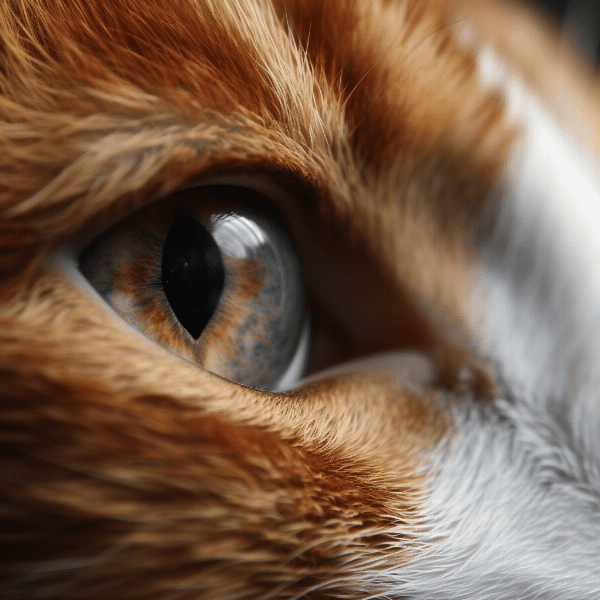
Common Symptoms of Feline Eye Sickness
Feline eye sickness can cause a variety of symptoms that range in severity. In this section, we will explore the most common symptoms that pet owners should be aware of when it comes to feline eye sickness.
Redness and Swelling
One of the most common symptoms of feline eye sickness is redness and swelling around the eye. This can be caused by a range of issues, from conjunctivitis to corneal ulcers.
Discharge
Another common symptom of feline eye sickness is discharge from the eye. This can be either clear or cloudy and may be accompanied by a foul odor. Discharge is usually a sign of an infection or inflammation in the eye.
Squinting
If your cat is squinting or keeping their eye partially closed, this could be a sign of feline eye sickness. Squinting can be caused by discomfort or pain in the eye, and it’s important to seek medical attention for your cat if you notice this symptom.
.
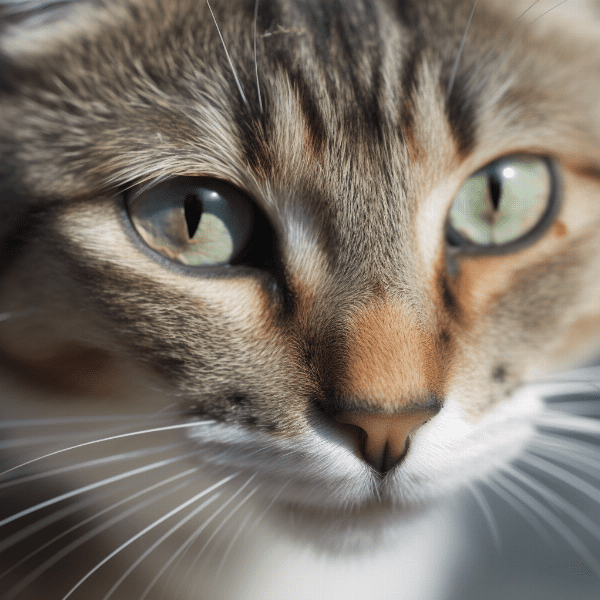
Causes of Feline Eye Sickness
There are many different factors that can contribute to the development of feline eye sickness. In this section, we will explore some of the most common causes of this condition.
Infections
Infections are a common cause of feline eye sickness. Bacterial, viral, and fungal infections can all affect the eyes and lead to symptoms such as redness, swelling, and discharge.
Injuries
Injuries to the eye can also cause feline eye sickness. Scratches, cuts, and foreign objects in the eye can all lead to inflammation and infection.
Genetics
Some cats may be more prone to certain types of eye conditions due to their genetics. For example, certain breeds are more likely to develop cataracts or glaucoma than others.
Underlying Health Conditions
Underlying health conditions, such as diabetes, can also contribute to the development of feline eye sickness. Cats with diabetes are at a higher risk of developing cataracts, which can lead to vision loss if left untreated.
Environmental Factors
Environmental factors can also play a role in the development of feline eye sickness. Exposure to irritants, such as smoke or chemicals, can cause inflammation and damage to the eyes.
Age
As cats age, they become more susceptible to certain types of eye conditions, such as cataracts and glaucoma. Regular eye exams are particularly important for senior cats to monitor for any changes in their eye health.
Overall, understanding the various causes of feline eye sickness can help pet owners take steps to prevent these conditions and seek appropriate treatment when necessary. If you notice any changes in your cat’s eye health, it’s important to contact your veterinarian for an evaluation.
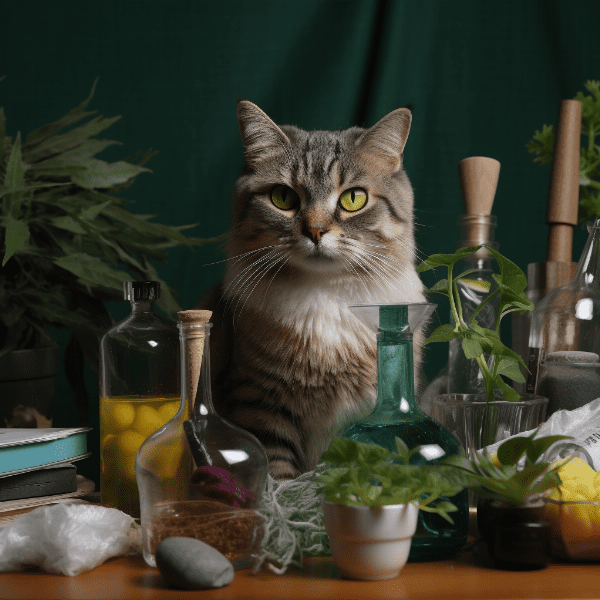
Diagnosing Feline Eye Sickness
If you suspect that your cat may be experiencing eye problems, it’s important to seek medical attention from a veterinarian. In this section, we will explore how feline eye sickness is diagnosed.
Veterinary Exam
The first step in diagnosing feline eye sickness is a comprehensive veterinary exam. During this exam, your veterinarian will examine your cat’s eyes for signs of redness, swelling, discharge, and other symptoms. They may also perform a physical exam to check for other underlying health conditions that may be contributing to your cat’s eye problems.
Eye Tests
After the initial exam, your veterinarian may perform a series of eye tests to further evaluate your cat’s eye health. These tests may include a visual exam, in which your veterinarian will examine your cat’s eyes using a special light to check for abnormalities, and a tonometry test, which measures the pressure inside your cat’s eyes.
Laboratory Tests
In some cases, laboratory tests may also be necessary to diagnose feline eye sickness. These tests may include a culture of any discharge from the eyes to determine the underlying cause of an infection or blood work to evaluate your cat’s overall health.
Referral to a Veterinary Ophthalmologist
If your veterinarian is unable to determine the underlying cause of your cat’s eye problems, they may refer you to a veterinary ophthalmologist. These specialists have advanced training in diagnosing and treating eye conditions in cats and can provide additional expertise in evaluating your cat’s eye health.
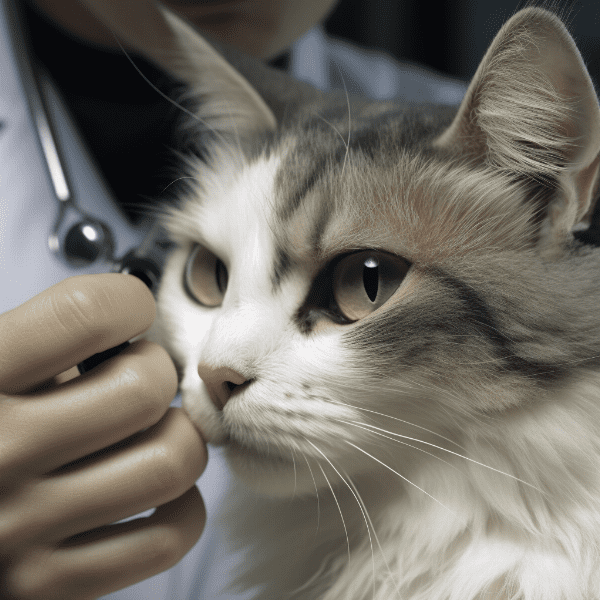
Treatment Options for Feline Eye Sickness
The treatment for feline eye sickness will depend on the underlying cause of the condition. In this section, we will explore some of the most common treatment options for this condition.
Medications
Medications are often used to treat feline eye sickness caused by infections or inflammation. These may include topical or oral antibiotics, antiviral medications, or anti-inflammatory drugs. Your veterinarian will determine the best course of treatment based on the underlying cause of your cat’s eye problems.
Surgery
In some cases, surgery may be necessary to treat feline eye sickness. For example, cataract surgery may be recommended for cats with advanced cataracts that are causing vision loss. Similarly, surgery may be necessary to remove foreign objects from the eye or to repair injuries to the eye.
Home Care
In addition to medical treatments, home care can also play an important role in treating feline eye sickness. This may include cleaning your cat’s eyes with a warm, damp cloth, administering medications as prescribed, and making sure your cat receives proper nutrition and hydration.
Preventive Measures
Preventive measures can also be taken to reduce the risk of feline eye sickness. This may include regular eye exams for cats of all ages, avoiding exposure to environmental irritants, and keeping your cat up-to-date on vaccinations to prevent infections.
Overall, the treatment options for feline eye sickness will depend on the underlying cause of the condition. If you notice any changes in your cat’s eye health, it’s important to seek prompt medical attention to ensure that your cat receives appropriate treatment and care.
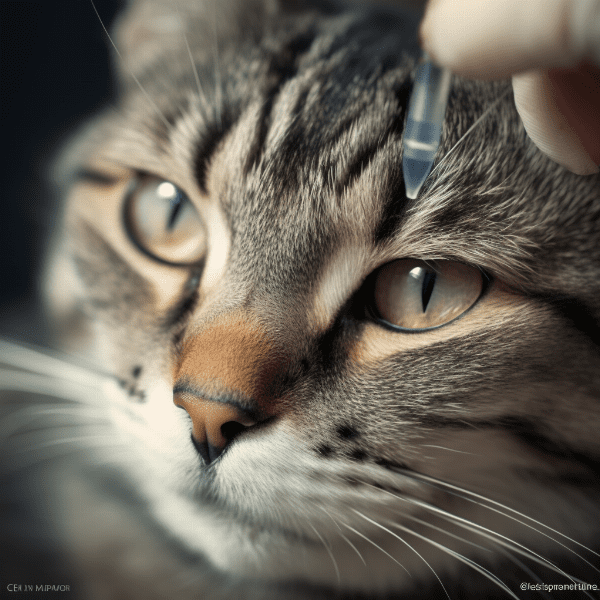
Home Care for Cats with Eye Sickness
In addition to medical treatment, home care can play an important role in managing feline eye sickness. In this section, we will explore some of the ways you can care for your cat at home if they are experiencing eye problems.
Administering Medications
If your cat has been prescribed medications to treat their eye sickness, it’s important to administer them as directed by your veterinarian. This may include applying eye drops or ointments directly to the eye, or giving oral medications.
Cleaning Your Cat’s Eyes
Cleaning your cat’s eyes regularly can help prevent infections and remove discharge. To do this, use a clean, damp cloth to gently wipe away any discharge from your cat’s eyes. Be sure to use a fresh cloth for each eye to avoid spreading any infection.
Providing Proper Nutrition and Hydration
Proper nutrition and hydration are important for all cats, but particularly for those with eye sickness. Be sure to provide your cat with fresh water and a well-balanced diet to support their overall health and immune system.
Reducing Environmental Irritants
Exposure to environmental irritants, such as smoke or dust, can aggravate feline eye sickness. To reduce the risk of irritation, keep your home clean and free of dust, and avoid smoking around your cat.
Monitoring Your Cat’s Symptoms
Overall, home care can be an important part of managing feline eye sickness. By following your veterinarian’s instructions for medication and providing proper care and nutrition at home, you can help your cat recover from their eye problems and prevent future issues from developing.
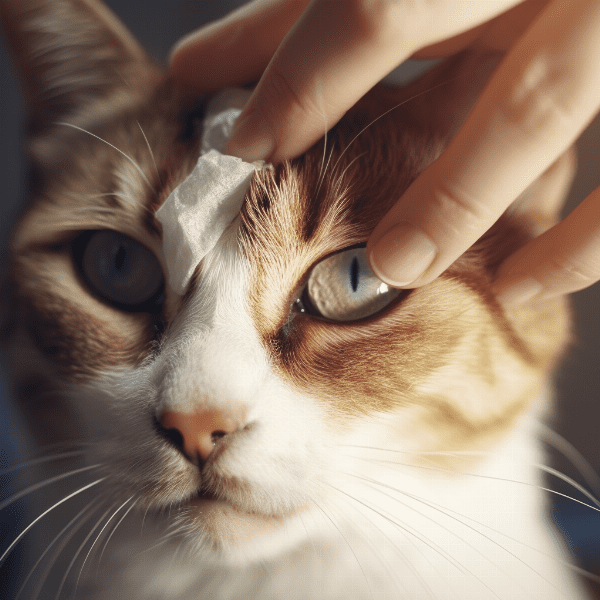
Preventing Feline Eye Sickness
While not all cases of feline eye sickness can be prevented, there are steps that pet owners can take to reduce the risk of their cats developing eye problems. In this section, we will explore some of the most effective ways to prevent feline eye sickness.
Regular Eye Exams
Regular eye exams are crucial for maintaining your cat’s eye health and catching any issues early on. Even if your cat appears to be in good health, it’s important to schedule regular check-ups with your veterinarian to ensure that their eyes are healthy.
Vaccinations
Vaccinations can help protect your cat from infectious diseases that can lead to feline eye sickness. Be sure to keep your cat up-to-date on all recommended vaccinations to reduce their risk of developing infections.
Environmental Management
Environmental management can also play a role in preventing feline eye sickness. Keep your home clean and free of dust, smoke, and other irritants that can cause inflammation and infection. If you have a cat that likes to scratch, consider providing them with a scratching post to reduce the risk of eye injuries from sharp objects.
Proper Nutrition and Hydration
Proper nutrition and hydration are important for maintaining your cat’s overall health, including their eye health. Be sure to provide your cat with a well-balanced diet and fresh water to support their immune system and reduce their risk of developing infections.
Regular Grooming
Regular grooming can help prevent eye problems by reducing the risk of infections and irritation. Be sure to brush your cat’s coat regularly to remove any debris or irritants, and clean their eyes as needed to remove any discharge.
Overall, preventing feline eye sickness requires a combination of regular veterinary care, environmental management, and proper nutrition and hydration. By taking these steps, you can help ensure that your cat’s eyes stay healthy and free from disease.
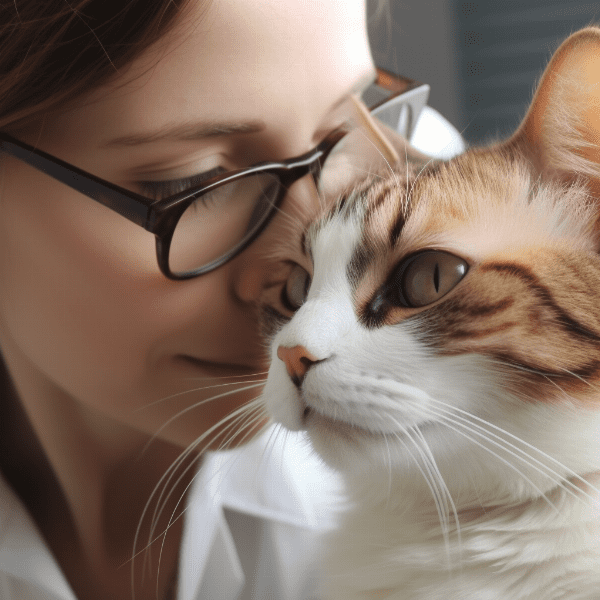
When to See a Veterinarian
If you notice any changes in your cat’s eye health, it’s important to seek prompt medical attention from a veterinarian. In this section, we will explore some of the most important signs that indicate your cat needs to see a veterinarian for their eye problems.
Persistent Redness or Swelling
If your cat’s eyes are persistently red or swollen, this could indicate a serious underlying issue that requires medical attention. Redness and swelling can be caused by infections, injuries, or inflammation, and should be evaluated by a veterinarian.
Discharge
Discharge from the eyes can be a sign of an infection or inflammation in the eye. If your cat’s eyes are producing discharge that is thick, cloudy, or foul-smelling, it’s important to seek medical attention right away.
Changes in Behavior
Changes in your cat’s behavior can also be a sign that they need to see a veterinarian for their eye problems. If your cat is rubbing their eyes frequently, avoiding bright lights, or showing signs of pain or discomfort, this could indicate a serious issue that requires treatment.
Cloudy or Hazy Eyes
If your cat’s eyes appear cloudy or hazy, this could be a sign of a serious eye condition, such as cataracts. If left untreated, these conditions can lead to vision loss, so it’s important to seek medical attention as soon as possible.
Injury to the Eye
If your cat has experienced an injury to the eye, such as a scratch or foreign object, it’s important to seek medical attention right away. Injuries to the eye can lead to infections and vision loss if left untreated.
Overall, if you notice any changes in your cat’s eye health, it’s important to seek prompt medical attention from a veterinarian. Early detection and treatment of eye problems can help prevent serious complications and ensure that your cat’s eyes remain healthy and free from disease.
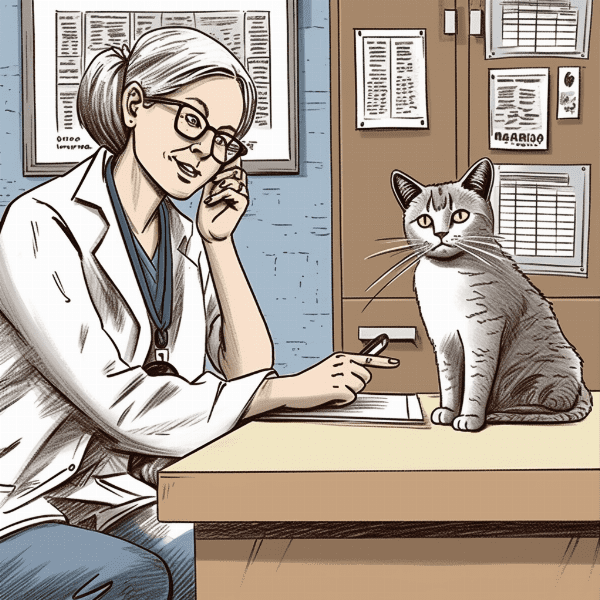
Importance of Regular Eye Exams for Cats
Regular eye exams are crucial for maintaining your cat’s eye health and catching any issues early on. In this section, we will explore some of the most important reasons why regular eye exams are so important for cats.
Early Detection of Eye Problems
Regular eye exams can help detect eye problems early on, before they progress and cause serious damage to your cat’s eyes. Early detection and treatment can help prevent vision loss and other complications.
Monitoring for Changes in Eye Health
Regular eye exams also allow your veterinarian to monitor your cat’s eye health over time. This can help detect any changes or abnormalities in your cat’s eyes, allowing for prompt treatment and management of any issues that may arise.
Prevention of Eye Problems
Regular eye exams can also help prevent eye problems from occurring in the first place. By catching any potential issues early on, your veterinarian can recommend preventive measures, such as environmental management or vaccination, to reduce your cat’s risk of developing eye problems.
Management of Underlying Health Conditions
Eye problems can be a sign of underlying health conditions, such as diabetes or high blood pressure. Regular eye exams can help your veterinarian detect these conditions early on, allowing for prompt management and treatment.
Tailored Treatment Plans
Regular eye exams also allow your veterinarian to develop tailored treatment plans for your cat’s specific eye health needs. By understanding your cat’s unique eye health, your veterinarian can recommend the most effective treatments and management strategies.
Overall, regular eye exams are crucial for maintaining your cat’s eye health and preventing serious complications. By scheduling regular check-ups with your veterinarian, you can help ensure that your cat’s eyes stay healthy and free from disease.
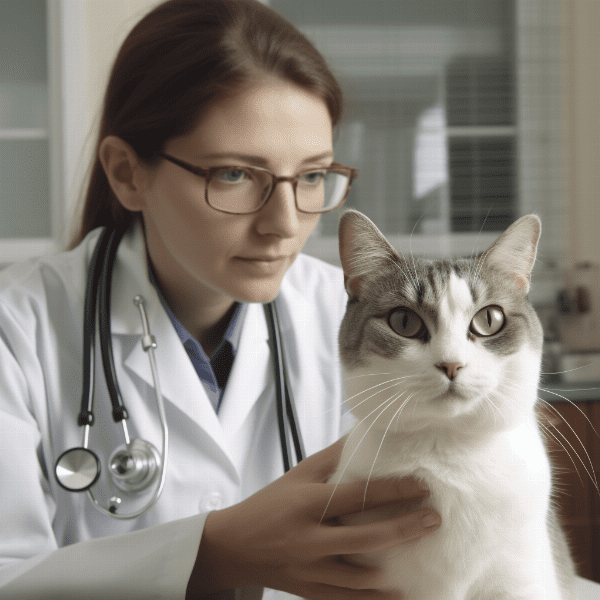
Living with a Cat with Eye Sickness
Living with a cat with eye sickness can be challenging, but there are steps you can take to help manage their condition and improve their quality of life. In this section, we will explore some of the most important things to keep in mind when living with a cat with eye problems.
Follow Your Veterinarian’s Recommendations
One of the most important things you can do when living with a cat with eye sickness is to follow your veterinarian’s recommendations. This may include administering medications as directed, cleaning your cat’s eyes regularly, and scheduling regular follow-up appointments.
Provide a Safe and Comfortable Environment
Providing a safe and comfortable environment is important for all cats, but particularly for those with eye problems. Be sure to keep your home clean and free of irritants, such as dust or smoke, that could exacerbate your cat’s eye problems. Additionally, provide your cat with comfortable bedding and plenty of opportunities for rest and relaxation.
Monitor Your Cat’s Symptoms
Monitoring your cat’s symptoms is important for managing their eye problems and ensuring that they receive prompt medical attention if their condition worsens. Keep an eye on any changes in your cat’s behavior, such as increased rubbing of the eyes or decreased appetite, and contact your veterinarian if you notice any concerning changes.
Manage Underlying Health Conditions
Eye problems can be a sign of underlying health conditions, such as diabetes or high blood pressure. If your cat has an underlying health condition that is contributing to their eye problems, it’s important to manage that condition to prevent further complications.
Be Patient and Supportive
Living with a cat with eye sickness can be frustrating at times, but it’s important to be patient and supportive of your cat. With proper care and management, many cats with eye problems can lead happy and healthy lives.
Overall, living with a cat with eye sickness requires dedication and patience. By following your veterinarian’s recommendations and providing a safe and comfortable environment, you can help manage your cat’s condition and improve their quality of life.
